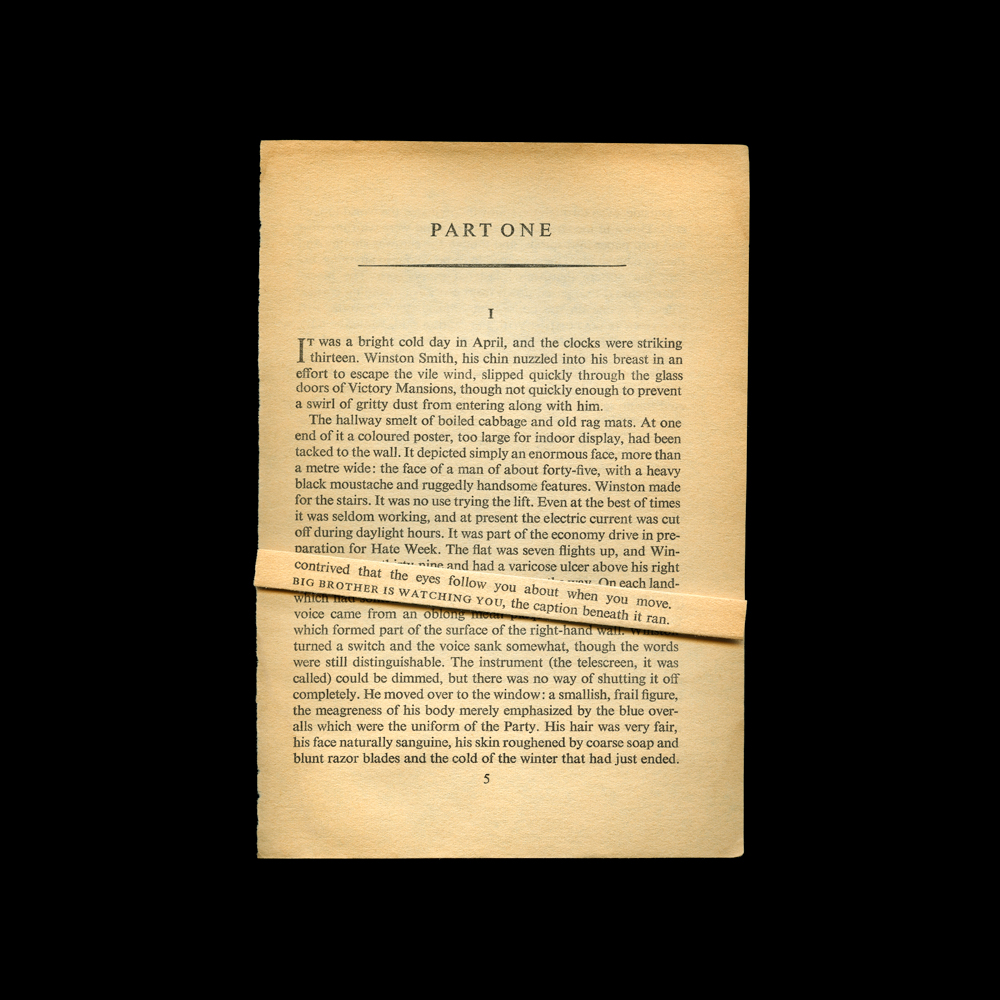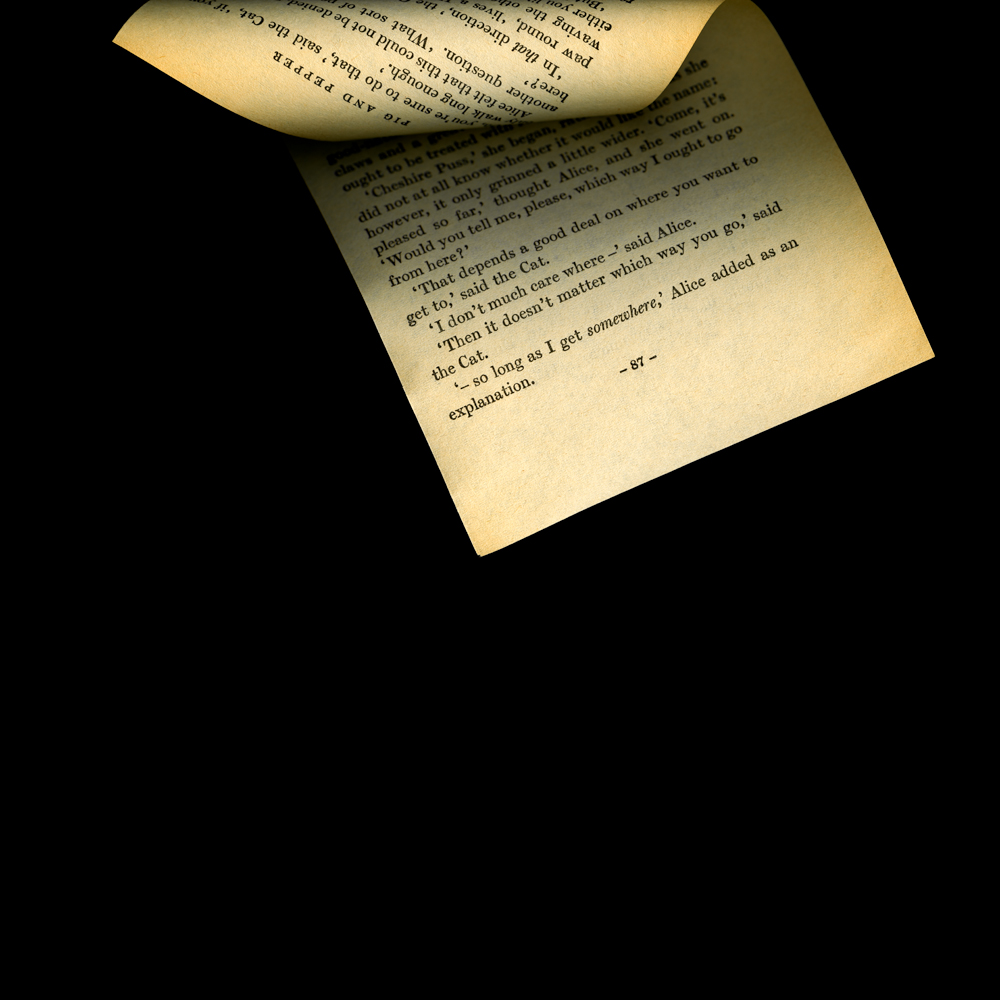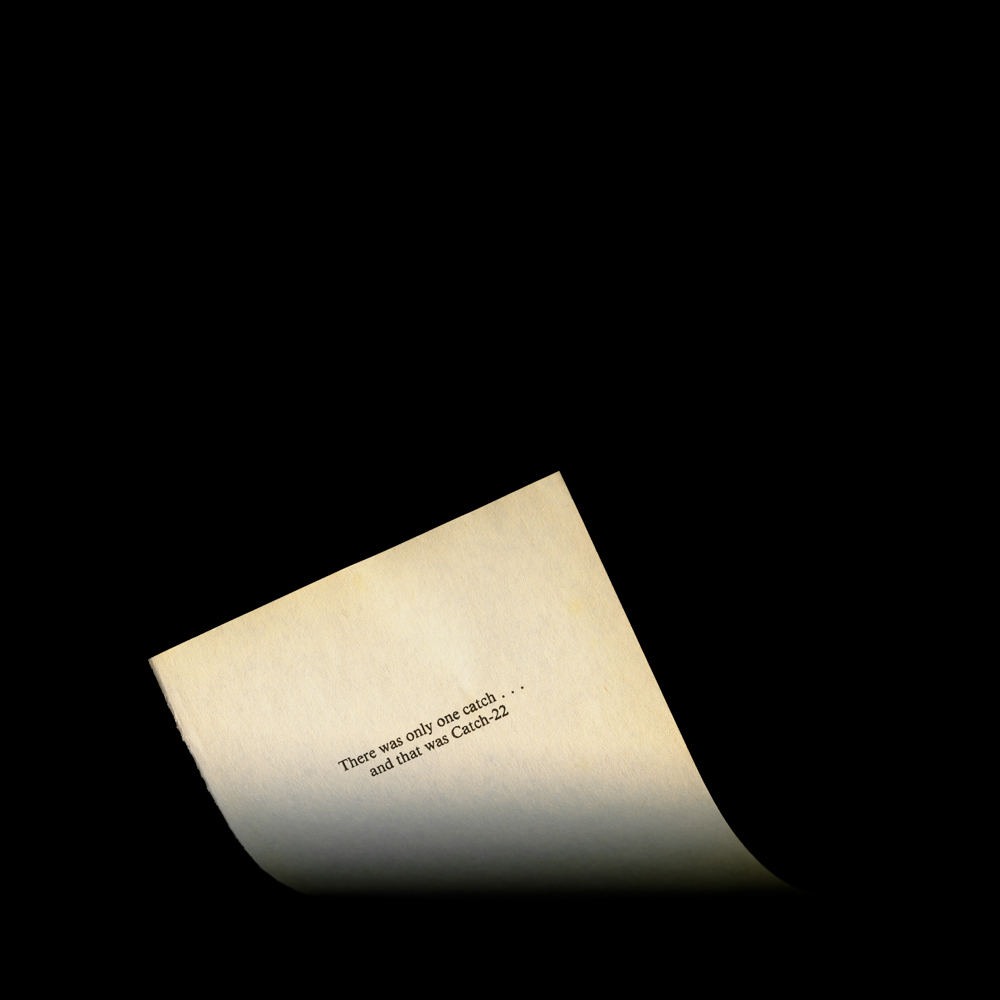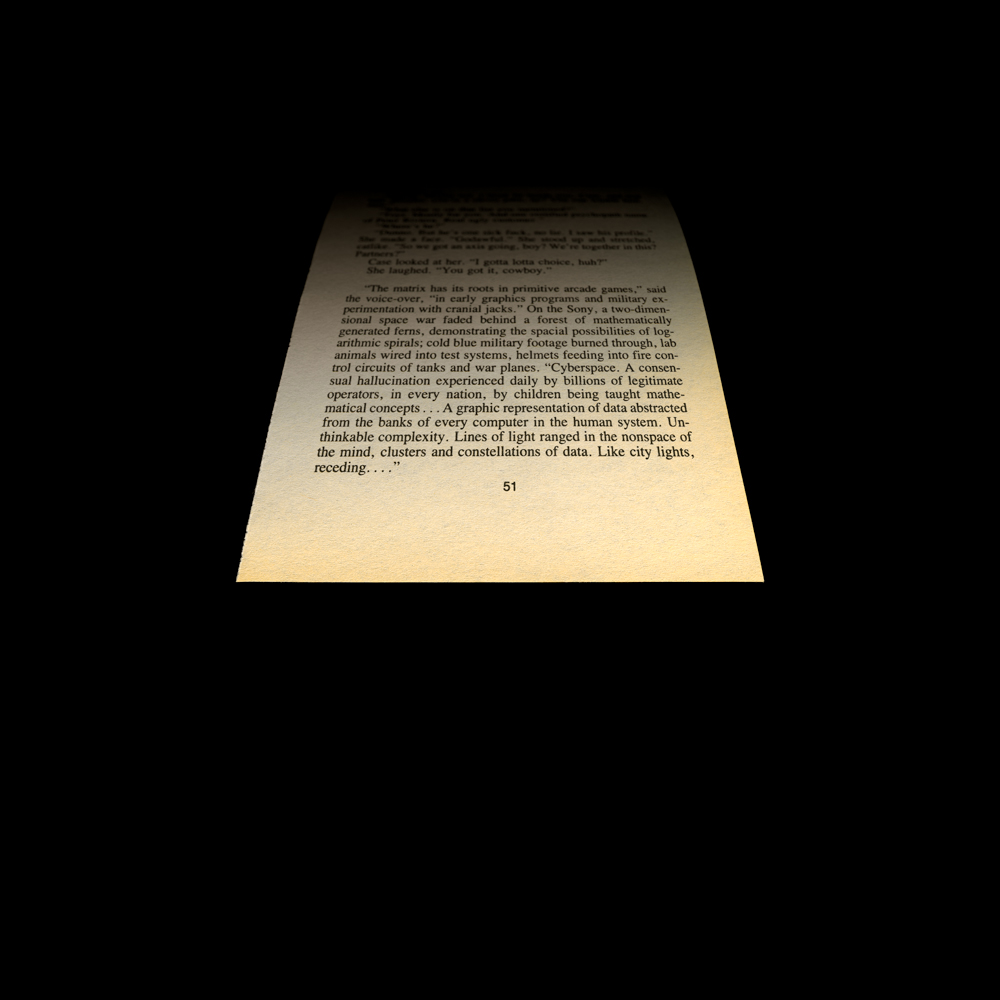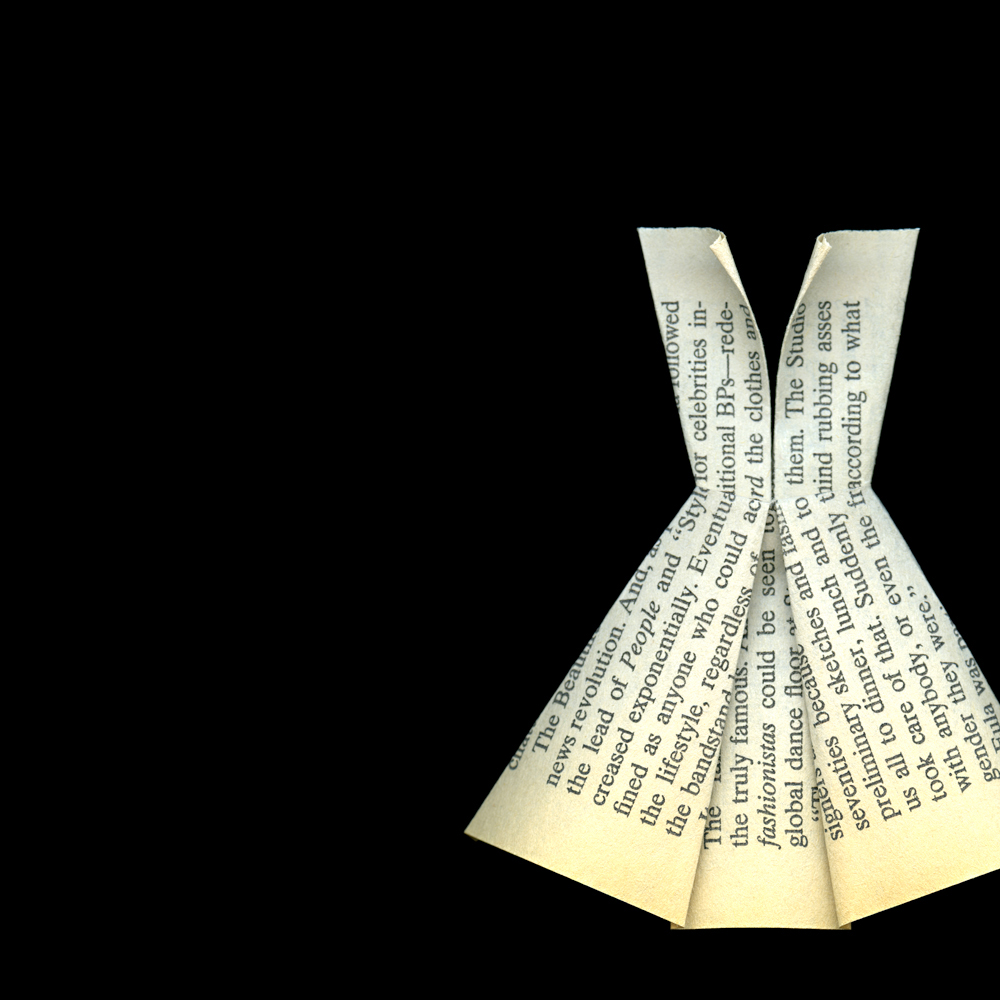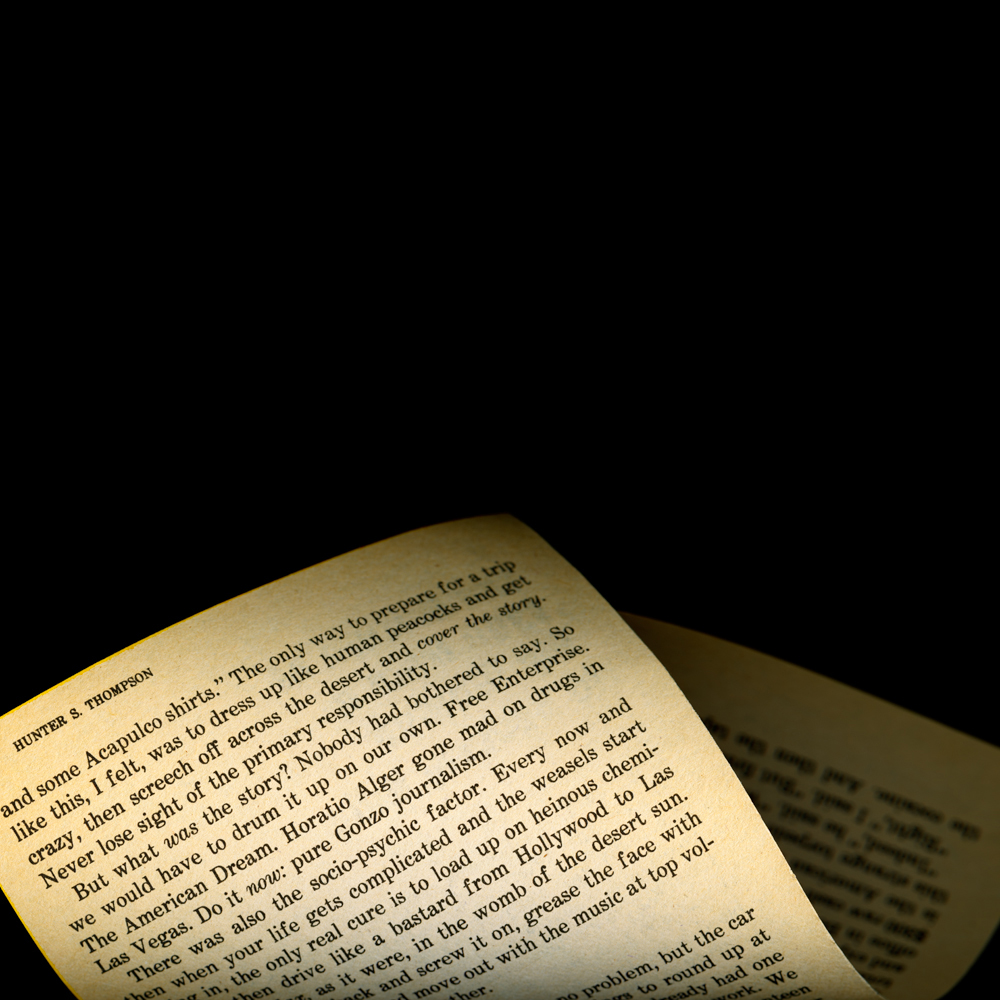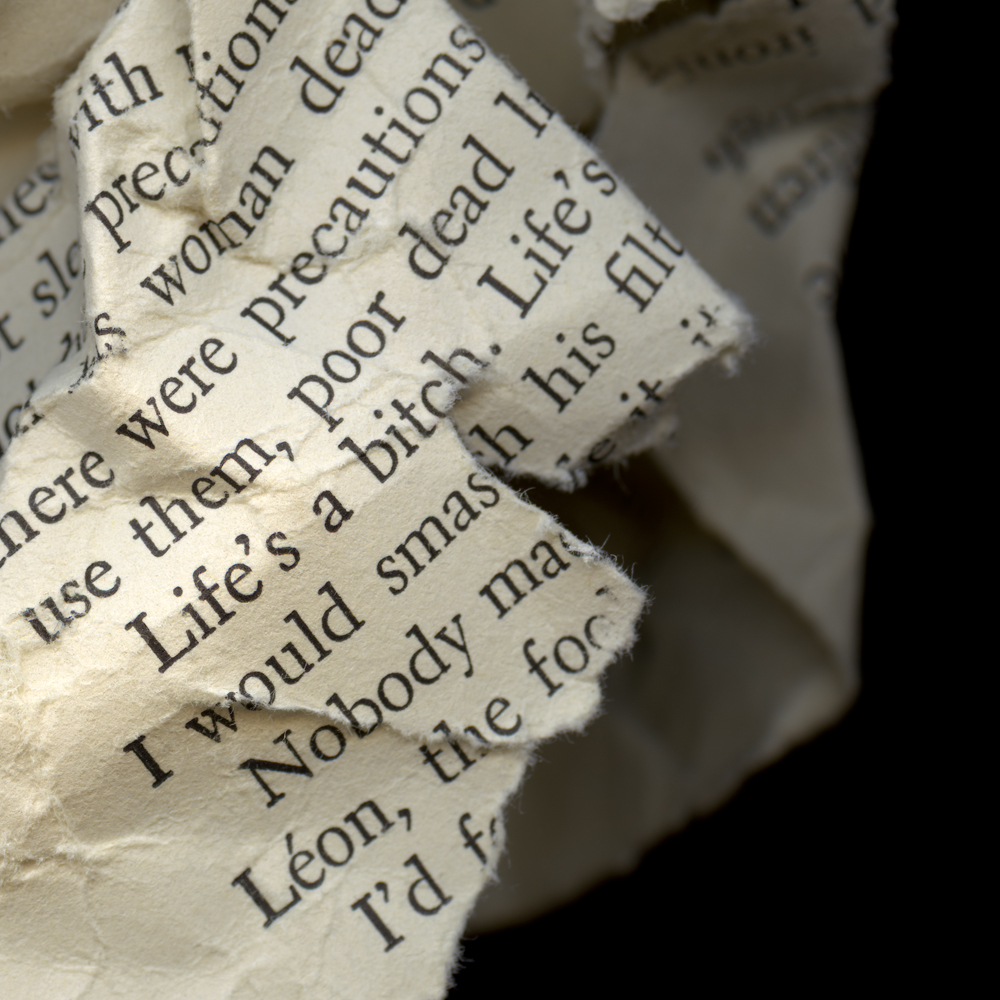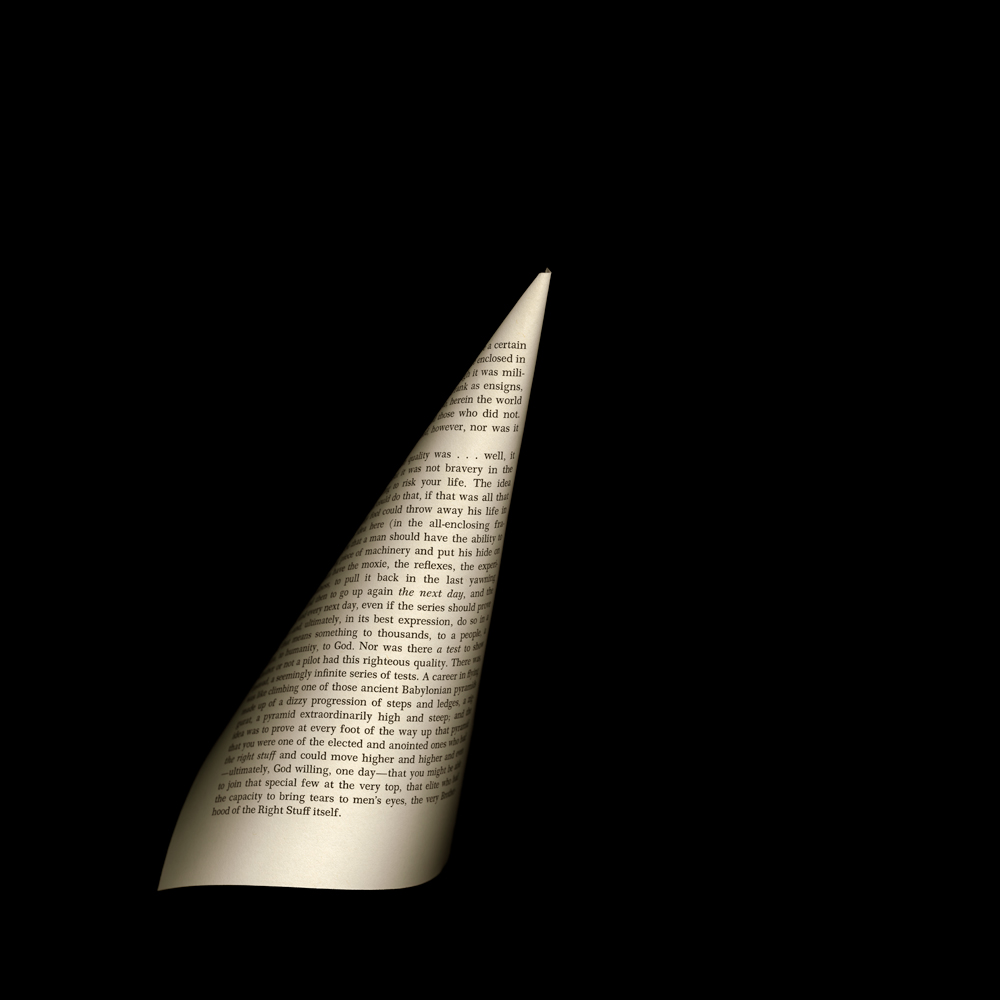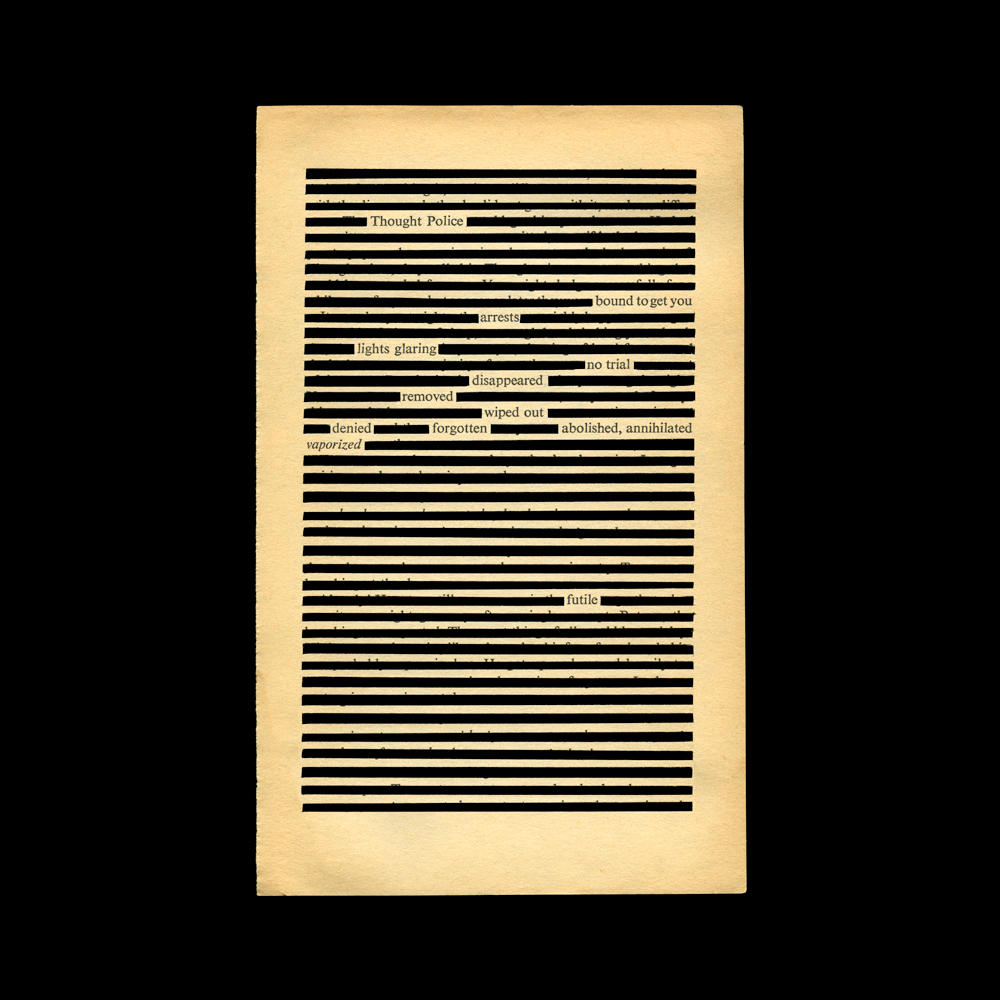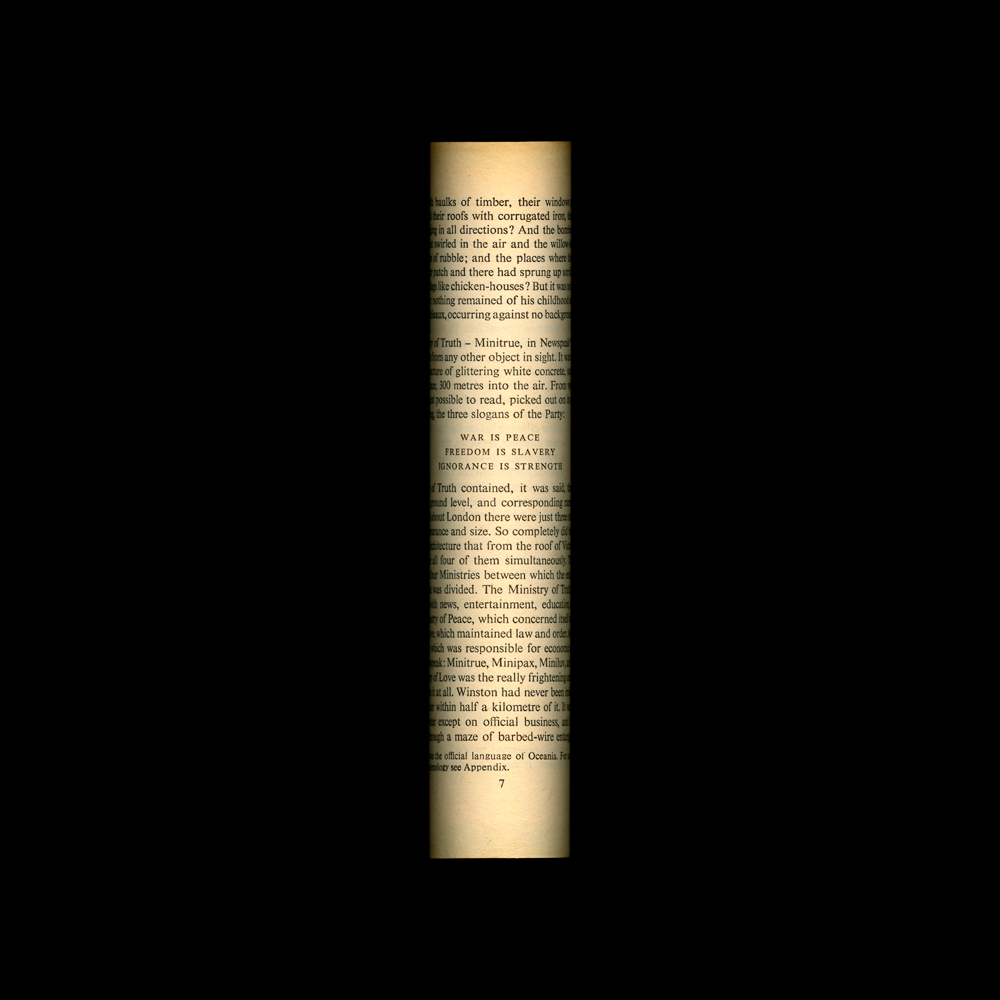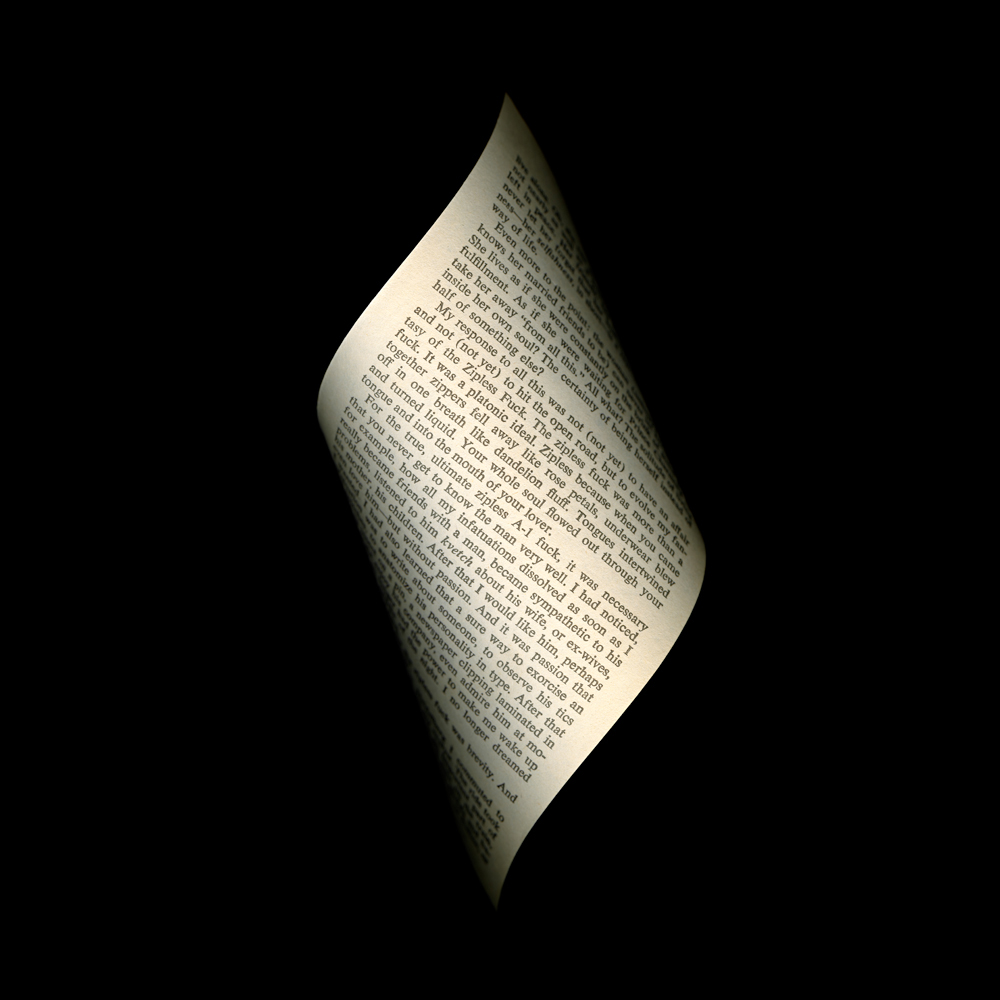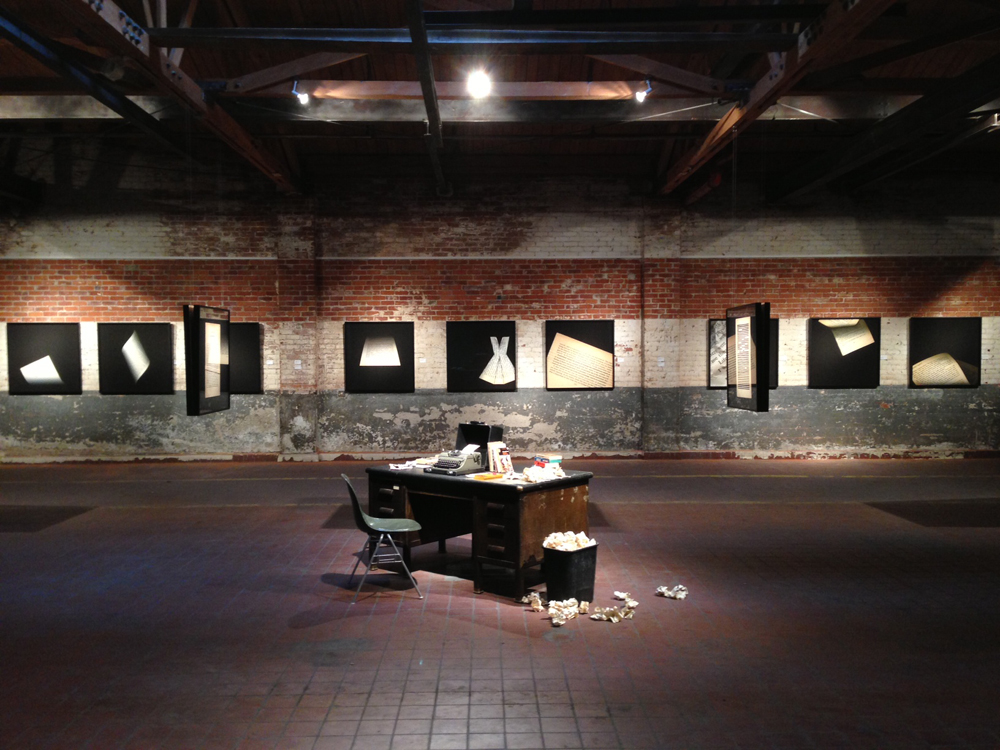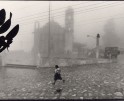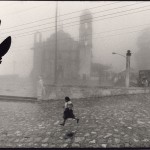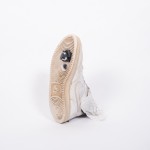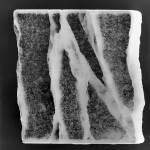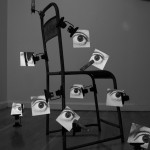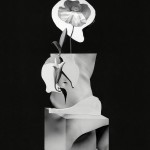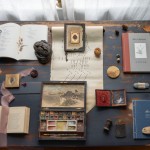David Fokos: The Book Pages Project
I remember being struck by the tranquility of David Fokos’ minimalist landscapes when I first saw them over a decade ago. And Fokos stuck in my mind because it was such a perfect name for a photographer, especially one using an 8×10 view camera. His latest body of work, which we are featuring today, is no less elegant and meticulous, although the subject matter and capture method have changed.
What I love about The Book Pages Project is that it is easily enjoyed by anyone who appreciates the physicality of “old-fashioned” books (vs. those on an e-reader), but there is a level of depth here for the true literature lover. David is not just capturing the beauty of the printed page, but the way that our everyday language is shaped by writers in seminal books. For example, in the first image in the series (seen above), David folded the page to resemble a piece of police tape blocking our view. This choice was because his research found that this very first page of Nineteen Eighty-Four is where George Orwell coined the phrase “Big Brother,” which we now commonly use to describe a government that invades the privacy of its own citizens. The rest of the series is full of these same clever homages to the birth of culturally significant literary words and phrases.
David Fokos is an internationally renowned photographic artist. His work has been the subject of over 60 solo shows, dozens of magazine articles, and can be found in scores of museums, and prominent corporate and private collections.
If you are in the San Diego, CA area, you can currently see this body of work at two exhibitions:
- Oceanside Museum of Art: April 28, 2018 – September 2, 2018
- San Diego International Airport: through the end of 2018
In addition, 40″ x 40″ limited edition prints of the book pages are available for sale. Editions are limited to 15 prints per image.
In Carroll’s famous story, Alice ventures down a rabbit hole to find herself in a world where all the laws of physics and logic seem to have been replaced. For this image I folded the page so that it seems that gravity has been reversed and the page has floated upward and curled against the top edge of the frame.
The Book Pages Project
This project is an homage to books and the art of their authors. “Real” books. Books with covers and dog-eared corners; books with pulpy paper and yellowing pages. It is an appreciation of the book’s physical form – the fonts, the layout, the ink, and the printing. And it is a celebration of the immeasurable contribution writers have made to our culture through their art.
For this project I have chosen works that I believe demonstrate the power of books. Every so often, a writer coins a phrase that goes on to have profound cultural significance, either as part of our daily vocabulary, or as the iconic representation of a point in history. And though, at the moment of inception, they may have been just one or two words among the hundreds of thousands that make a book, these few have lived on to become linguistic superstars.
Life’s a bitch. Or so it’s been since 1950 when Joy Davidman penned those words on page 184 of her novel Weeping Bay. The now common notion of “Cyberspace,” for example, didn’t exist until William Gibson invented it for his book, Neuromancer, in 1984. For this series, I went back to the birthplace of these ideas to witnesses the moment in which they winked into existence.
With this project I not only wanted to highlight specific words, but I wanted the viewer to see them as works of art rather than mere information. To imbue the creations of these writers with physicality I have manipulated the pages to subtly reference the content. “The Right Stuff” is formed into a conical shape, evocative of the nose of Chuck Yeager’s X1 or a NASA rocket. “Big Brother” is meant to reference police tape, suggesting that Big Brother is preventing you from going past the tape and reading the subversive text on the page behind. “Fashionista” has been formed into a sexy, little dress. And after Hunter S. Thompson writes “the drugs began to take hold”, I folded the rest of the page in a way that distorts the text as if the drugs were taking hold of the reader and distorting their vision.
Here, in these images, the viewer sees the work of these authors as art, both literally and metaphorically. – David Fokos
A catch-22 is a paradoxical situation from which an individual cannot escape because of contradictory rules. In Joseph Heller’s novel of the same name, a military pilot named Orr requests a mental examination in hopes that he will be found insane and therefore not required to fly any more missions. In the book, Heller writes,
“There was only one catch and that was Catch-22, which specified that a concern for one’s own safety in the face of dangers that were real and immediate was the process of a rational mind. Orr was crazy and could be grounded. All he had to do was ask; and as soon as he did, he would no longer be crazy and would have to fly more missions. Orr would be crazy to fly more missions and sane if he didn’t, but if he was sane, he had to fly them. If he flew them, he was crazy and didn’t have to; but if he didn’t want to, he was sane and had to.”
So, for this piece, I chose to use the epigraph which appears before the title page in the book. Technically, it is the first instance of the phrase Catch-22, and I formed it into a shape reminiscent of a poker player stealing a glance at his or her cards, meaning that they know something the others don’t, and can use that information to their advantage. In the book, it is the doctor who informs Orr about Catch-22 who holds this knowledge.
It’s hard to imagine a time before we were all jacked in to the worldwide hive-mind known as the Internet.
But in 1984, a full decade before the first web page ever flickered to life, William Gibson not only introduced us to the concept, but he also gave us a name for it. In his 1984 masterwork, Neuromancer, Gibson called it, “cyberspace”, which he defined as:
“A consensual hallucination experienced daily by billions… a graphic representation of data abstracted from the banks of every computer in the human system.”
Remarkably, in the same paragraph, Gibson also introduces us to the idea of connecting to the Matrix via cranial jacks.
In Nineteen Eighty-Four, Orwell writes of Doublethink as, “The power of holding two contradictory beliefs in one’s mind simultaneously, and accepting both of them… To tell deliberate lies while genuinely believing in them, to forget any fact that has become inconvenient, and then, when it becomes necessary again, to draw it back from oblivion for just as long as it is needed, to deny the existence of objective reality and all the while to take account of the reality which one denies—all this is indispensably necessary.
Authoritarian and dictatorial governments often engage in relentless propaganda campaigns to create a state of doublethink within the masses. Endless repetition is the basis of propaganda, so for this piece, I folded the page so that every line contains the word doublethink.
Thing of Beauty is an account of the famous supermodel Gia Carangi who was used and then discarded by the fashion industry. She became a heroin addict and eventually died of AIDS-related complex when she was 26 years old. I formed the page into a sexy, little dress headed for the catwalk, but I purposely left blank, anonymous space above and below where the head and legs would normally be in order to represent, in the view of the fashion industry, the interchangeability and discardability of their models.
The Merriam-Webster Dictionary defines “gonzo” as:
1. of, relating to, or being a style of journalism marked by a lack of objectivity due to the writer’s immersion in the subject and often participation in the activity being documented.
2. outlandishly unconventional, outrageous, or extreme, very strange or unusual : bizarre
While the first definition stems directly from Hunter S. Thompson’s book, it is the second definition that has not only become the more common usage, but one that well sums up what the New York Times then called, “The Dope Decade.”
For this piece, I wanted to capture a sense of that insane, wild, hanging-on-by-your-fingers, Hunter S. Thompson ride so I formed the page into shape evocative of a roller coaster.
To capture the essence and frustration inherent in the phrase, “life’s a bitch”, I imagined the author sitting at her desk, frustrated with her manuscript, pulling pages from her typewriter, crumpling them up and throwing them at the wastebasket.
The Right Stuff is the term Tom Wolfe coined to describe the combination of fearlessness, commitment, and nonchalance possessed by the test pilots who became America’s first astronauts. As Wolfe writes on the page I used for this image, “As to just what this ineffable quality was. . .well, it obviously involved bravery. But it was not bravery in the simple sense of being willing to risk your life. . . any fool could do that. No, the idea seemed to be that a man should have the ability to go up in a hurtling piece of machinery and put his hide on the line and then have the moxie, the reflexes, the experience, the coolness, to pull it back in the last yawning moment–and then to go up again the next day, and the next day, and every next day.
Chuck Yeager, perhaps the most famous of all test pilots, and the single person who most personifies the quality of The Right Stuff, never became an astronaut. Yeager is best known for being the first person to break the sound barrier. On the day of the fateful flight, Yeager climbed into the cockpit of his X-1 jet with a broken arm. Had he told anyone about his arm, he would have been grounded. Instead, he took a sawed-off broom handle with him so he could close the canopy, and then without any fuss, set off to make history.For this image, I formed the page into a shape evocative of the nose cone of Chuck Yeager’s X-1 and of rockets.
In George Orwell’s prescient novel, Nineteen Eighty-Four, he introduced the terrifying concept of the Thought Police — a secret police who rely on mass surveillance and informants to search out and punish those who hold views that are contrary to the views of the government.
This idea that one must accept the world as dictated by the ruling authority regardless of facts is especially relevant in today’s “alternative facts”, post-truth society.
In this piece, I used a razor knife to physically redact text, leaving the Thought Police surveilling all from the top of the page. I also left a selection of words that reference the tactics employed by the Thought Police in their suppression of free thought.
Even with the redactions, one can still see the faint remains of the text’s ascenders and descenders, which represent the muffled voices of the suppressed masses.
Finally, near the bottom of the page, isolated and hopeless, is the word “futile”, representing final resignation, followed by silence.
In this piece I highlight the three slogans of the Ministry of Truth (Minitrue) — War is Peace. Freedom is Slavery. Ignorance is Strength. Orwell’s warning of the possibility of a dystopian future at the hands of an oppressive government is especially relevant in today’s world of “fake news” and “alternative facts”. Here I have formed the page into the shape of a kiosk plastered with government propaganda, such as one might encounter on a street corner.
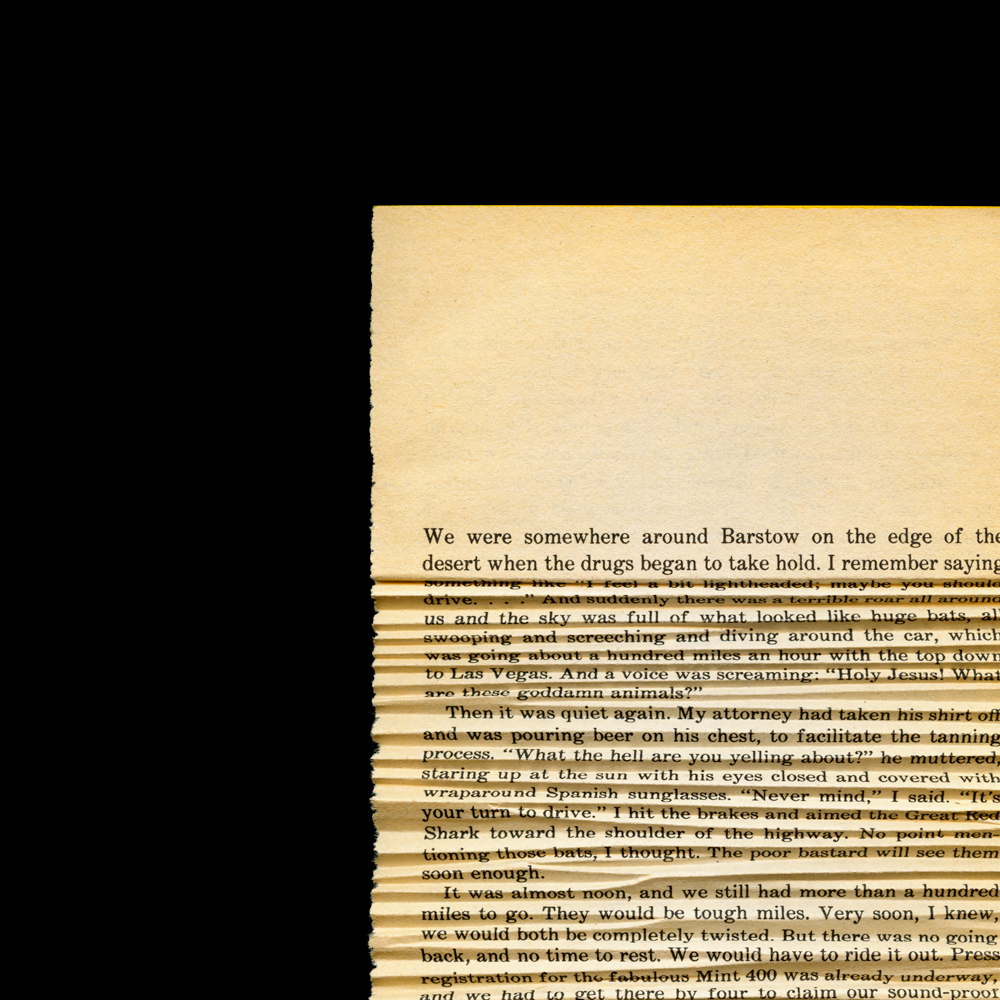
©David Fokos, When The Drugs Began To Take Hold, Fear and Loathing In Las Vegas, Hunter S. Thompson, 1971
The New York Times called Fear and Loathing in Las Vegas “the best book on the dope decade”. Hunter S. Thompson concludes the opening sentence of his book with “when the drugs began to take hold”. I took that page and folded the rest of the page in a way that distorts the text as if the drugs are taking hold of the reader and distorting their vision.
Erica Jong is a feminist, scholar, an 18th century English Literature graduate of Columbia University, a novelist and a poet.
In her groundbreaking 1973 novel, Fear of Flying, she boldly advanced the women’s liberation movement by unapologetically suggesting that women could enjoy the pleasures of anonymous, casual sex without being a a “slut”, or “unmarriable” – the same as a man. Before that time, it was fine, even admired, for a man to have anonymous relations with a woman, but that was not something that “good girls” did.
A “zipless fuck” is defined as a sexual encounter for its own sake, without emotional involvement or commitment or any ulterior motive, between two previously unacquainted persons. You’ll never meet again, and nobody who knows you will ever know it happened.
“The zipless fuck is absolutely pure. It is free of ulterior motives. There is no power game. The man is not “taking” and the woman is not “giving.” No one is attempting to cuckold a husband or humiliate a wife. No one is trying to prove anything or get anything out of anyone. The zipless fuck is the purest thing there is. And it is rarer than the unicorn. And I have never had one.” – Erica Jong, Fear of Flying (1973)
Posts on Lenscratch may not be reproduced without the permission of the Lenscratch staff and the photographer.
Recommended
-
Sunjoo Lee: Untold
October 20th, 2025 -
Suzanne Theodora White in Conversation with Frazier KingSeptember 10th, 2025
-
2025 PPA Photo Award Winner: Teela Misa DeLeónSeptember 5th, 2025
-
The 2025 Lenscratch Honorable Mention Winner: Montenez LoweryJuly 26th, 2025
-
LUMINOUS VISIONS: Shoshannah WhiteJuly 17th, 2025

